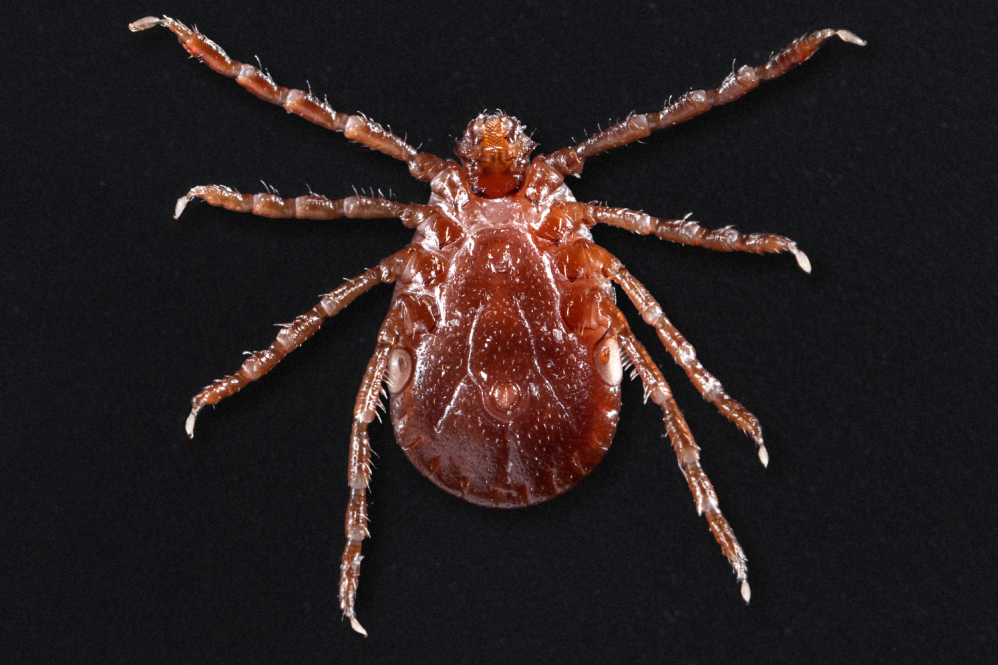The Connecticut Veterinary Medical Diagnostic Laboratory (CVMDL) has identified its third instance of the invasive Asian longhorned tick in the state.
The CVMDL identified one Asian longhorned tick this summer, submitted by someone in Fairfield. This marks the third case of the Asian longhorned tick the CVMDL has seen since it arrived in the United States in 2017. The tick can be identified microscopically by the distinctive “horns” on the sides of its mouth.
The tick was not carrying any commonly tick-borne pathogens, including the bacteria that cause Lyme disease. The CVMDL tested it for eight pathogens in total.
The CVMDL identified its first case of this tick in June 2020 and the second in August 2022.
“Given how recently the tick has emerged in the U.S., there is very limited information on what pathogens this insect may carry and if they can transmit them to humans,” says Guillermo Risatti, CVMDL director and professor of pathobiology at UConn. “But in countries where the tick exists, it is a known vector for human and animal disease, so we need to monitor this closely to support holistic health of residents and animals in our state.”
The potential health impact of the tick is significant. In its native habitat in China and Japan, the Asian longhorned tick can transmit a virus that can cause severe hemorrhagic fever. In some regions of New Zealand and Australia, where the tick is an invasive species, it can reduce production in dairy cattle by an estimated 25%.
The Asian longhorned tick is native to eastern Asia but has been found on humans, wildlife, livestock, and pets in the U.S. The tick was first identified in New Jersey in 2017 and has been spreading rapidly. As of 2023, the tick has been identified in 19 states including Connecticut.
One of the major concerns with this tick is that females can reproduce asexually. This can cause massive host infestations that are difficult to control.
Identifying and testing ticks for known disease is just one of the many diagnostic and surveillance services the CVMDL provides to the state and region. The CVMDL has the capacity to identify and test a wide range of animals and animal-borne pathogens in pets, livestock, and wildlife.
Questions and concerns can be addressed to cvmdl@uconn.edu or visit https://cvmdl.uconn.edu/tick-testing/options/
The CVMDL is part of the Department of Pathobiology and Veterinary Science in the College for Agriculture, Health and Natural Resources (CAHNR). It is one of the most active service centers at the University of Connecticut supporting surveillance of potentially harmful human and animal diseases. The CVMDL is an AAVLD- (American Association of Veterinary Laboratory Diagnosticians) accredited laboratory and a member of the National Animal Health Laboratory Network (NAHLN).
Follow UConn CAHNR on social media



